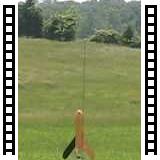 | 1/72 Space Shuttle Model Test Flight, October 1998, #1 (2011-06-03)      Model by George Gassaway, first flight of the day, of an on and off project started in 1977. Video shot by Greg Warren. 1/72 scale model flown on F25 rocket engine.
|
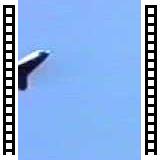 | 1/72 Space Shuttle Model Test Flight, October 1998, #3 (2011-06-03)      Model by George Gassaway, third flight of the day, of an on and off project started in 1977. Video shot by Greg Warren. 1/72 scale model flown on F25 rocket engine, with R/C orbiter doing an OMS burn on an A3 after ET sep.
|
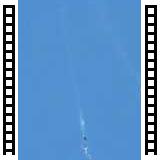 | 3-stage Ariane at the 2010 WSMC in Serbia (2011-06-03)      unknown model, separates boosters fires 3 stages, probably was clustered
|
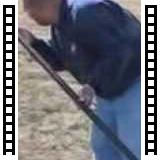 | BRB Rocket Launch Equipment & HPR L1 Cert Flight. (2011-06-28)      A brief review of how the Birmingham Rocket Boys (BRB) Launch Equipment operates. Plus, a HPR Level 1 Cert Flight by Brandon Kirkland, on December 13, 2008 (With pad load assistance by Kim Mitchell). For more info, go to: BirminghamRocketBoys.com
|
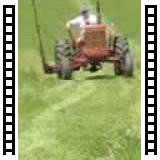 | Chad Ring on ATV, Launch Crue Regional June 6-7, 2009 (2011-06-03)      Chad Ring on ATV, Launch Crue Regional June 6-7, 2009
|
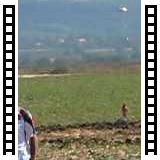 | Chris Kidwell's S3A Parachute model lands at 2010 WSMC (2011-06-03)      During the S3A Parachute Event, Esther Clark grabs Chris' model from the air before it has a chance to go back up again
|
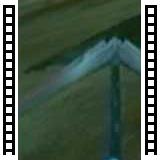 | Cuda R/C Rocket Glider - staged C6s (2011-06-20)      R/C Rocket Boosted Glider. This used two-staged C6 engines. For more info on the model, see this page: homepage.mac.com This was flown at a Birmingham Rocket Boys (BRB) Launch in February 2005. If you are interested in rockets, check out the National Association of Rocketry, at NAR.ORG
|
 | Cuda R/C Rocket Glider Onboard video (2011-05-31)      R/C Rocket Boosted Glider. Using an E6 engine burning for 8 seconds (yes the model is controlled on the boost). It boosted to about 800-1000 feet. The camera pod rotates forward after going into glide mode. For more info on the model, see this page: members.aol.com This was flown at a Birmingham Rocket Boys (BRB) Launch in June 2005. If you are interested in rockets, check out the National Association of Rocketry, at NAR.ORG - George Gassaway
|
 | G Superroc Test flight - March 2007 (2011-06-22)      Southern Neutron Team* test flight. 14.75 foot tall all-BT-60 model, powered by a cluster of one F10 and two E6's. This apparently was the first max-length G Superroc to fly successfully. If the altimeter onboard was correct, it would have scored 273150 points if flown officially. This model later flew to first place in Team Div. at NARAM-49. Ignitors were Firestars. * - Members of Southern Neutron: George Gasswway, Ed LaCroix, Terrill Willard, and Ryan Woebkenberg
|
 | Great Dane 15 Swing Wing Rocket Glider (2011-06-03)      A 6.5 foot wingspan Rocket Glider by George Gassaway. Test flown in 1976 on an E11.8 model rocket engine. Model used a Pop-stab dethermalizer, which is shown activating during the flight.
|
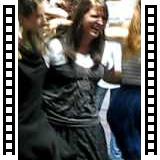 | Juniors Dancing at the 2010 WSMC banquet (2011-06-03)      Most of the US Team Juniors were joined by Japanese Juniors. Later, Juniors from other countries also joined in
|
 | LED Finger Light test for night rocket (2011-06-03)      Taped an LED finger Light to shine up inside of an unpainted Estes BT-60 Nose Cone. The video shows how brightly the flashing light makes the nose cone light up. For a real rocket flight, the light would need to be securely mounted into the nose cone, and not easily knocked loose.
|
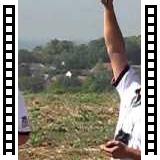 | Matthew Berk Flying S8D at 2010 WSMC - US Team (2011-06-03)      Matthew Berk boosting his S8D Rocket Glider, at the 2010 WSMC in Serbia. Matthew was one of three US Junior Team members who took the Junior Team Gold Medal in S8D
|
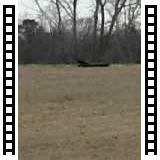 | MVI 1196 (2011-06-03)      |
 | Night LED Strobe (2011-06-20)      Flashing LED assembly for Model Rockets at Night
|
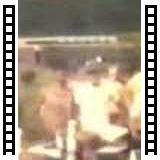 | Old Rocket Prang Film Preview by George Gassaway (2011-06-20)      Preview from old Model Rocket Prang (crash) films shot by George Gassaway in the 1970's. These were accidents, do not try to emulate them.
|
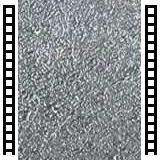 | OmniPad&Tower.dv (2011-07-31)      Assembly video for Omni-Pad and Tower for Raven-10 R/C Rocket Glider. No video of models or flying, only the assembly. Pad & Tower designed by George Gassaway
|
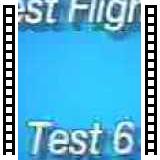 | R/C Space Shuttle Orbiter Model Piggyback, October 1998 (2011-06-03)      Model by George Gassaway, of a 1/60 scale piggyback boosted Radio Controlled Orbiter. Video shot by Greg Warren. Model boosted on an Aerotech G12 reload, burning for 8 seconds. Orbiter uses rudder for steering, and elevons only for elevator pitch (much smoother steering with rudder than with ailerons or mixed elevons). Third R/C channel is orbiter sep from carrier rocket.
|
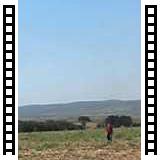 | Ryan Woebkenberg S8E/P Landing at 2010 WSMC in Serbia - US Team (2011-06-03)      The ground was rough, two of three landings his model broke the tail. After the landing, Ryan runs back his transmitter to impound, though he did have plenty of time left to turn it back in at a more leisurely pace.
|
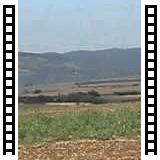 | S8E/P Landing at 2010 WSMC in Serbia (2011-06-03)      Unknown model coming in for a 100 point landing in the S8E/P Event at the 2010 WSMC in Serbia
|
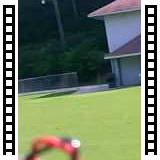 | S8E/P Rocket Glider Practice Landings #1 (2011-06-03)      Practicing Landings for the FAI S8E-PR/C Rocket Glide event, using a Hi-Start, on August 6, 2010. This is cheaper and easier than doing rocket boosts, as it is a lot more critical to get in lots and lots of practice for doing the landings than for the rocket boosts. The scoring for the event is to try to stay in the air for exactly 6 minutes (360 seconds), which would give a time score of 360. Plus a landing score of up to 100 points. Land with 1 meter of the spot, get 100 points, within 2 meters 90 points, and so on, 10 points less for each meter away, and zero landing points outside of 10 meters.
|
 | S8E/P Rocket Glider Practice Landings #2 (2011-06-03)      Practicing Landings for the FAI S8E-PR/C Rocket Glide event, using a Hi-Start, on August 6, 2010. This is cheaper and easier than doing rocket boosts, as it is a lot more critical to get in lots and lots of practice for doing the landings than for the rocket boosts. The scoring for the event is to try to stay in the air for exactly 6 minutes (360 seconds), which would give a time score of 360. Plus a landing score of up to 100 points. Land with 1 meter of the spot, get 100 points, within 2 meters 90 points, and so on, 10 points less for each meter away, and zero landing points outside of 10 meters.
|
 | S8E/P Rocket Glider Practice Landings #3 (2011-06-03)      Practicing Landings for the FAI S8E-PR/C Rocket Glide event, using a Hi-Start, on August 6, 2010. This is cheaper and easier than doing rocket boosts, as it is a lot more critical to get in lots and lots of practice for doing the landings than for the rocket boosts. The scoring for the event is to try to stay in the air for exactly 6 minutes (360 seconds), which would give a time score of 360. Plus a landing score of up to 100 points. Land with 1 meter of the spot, get 100 points, within 2 meters 90 points, and so on, 10 points less for each meter away, and zero landing points outside of 10 meters.
|
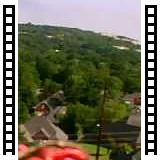 | S8E/P Rocket Glider Practice Landings #4 (2011-06-03)      Practicing Landings for the FAI S8E-PR/C Rocket Glide event, using a Hi-Start, on August 12, 2010. This is cheaper and easier than doing rocket boosts, as it is a lot more critical to get in lots and lots of practice for doing the landings than for the rocket boosts. The scoring for the event is to try to stay in the air for exactly 6 minutes (360 seconds), which would give a time score of 360. Plus a landing score of up to 100 points. Land with 1 meter of the spot, get 100 points, within 2 meters 90 points, and so on, 10 points less for each meter away, and zero landing points outside of 10 meters. If you want to see onboard rocket boosts, see some of my other videos. The model used a keychain camera onboard, which took the video. For more info on this camera see this thread on The Rocketry Forum: www.rocketryforum.com Also see this thread where Jonathan Dill's Keychain Camera first flew on my glider, during a rocket boost in some strange weather: www.rocketryforum.com
|
 | S8E/P Rocket Glider Practice Landings #5 (2011-06-03)      Practicing Landings for the FAI S8E-PR/C Rocket Glide event, using a Hi-Start, on August 12, 2010. This is cheaper and easier than doing rocket boosts, as it is a lot more critical to get in lots and lots of practice for doing the landings than for the rocket boosts. The scoring for the event is to try to stay in the air for exactly 6 minutes (360 seconds), which would give a time score of 360. Plus a landing score of up to 100 points. Land with 1 meter of the spot, get 100 points, within 2 meters 90 points, and so on, 10 points less for each meter away, and zero landing points outside of 10 meters.
|
 | S8E/P Rocket Glider Practice Landings #6 (2011-06-03)      Practicing Landings for the FAI S8E-PR/C Rocket Glide event, using a Hi-Start, on August 12, 2010. This is cheaper and easier than doing rocket boosts, as it is a lot more critical to get in lots and lots of practice for doing the landings than for the rocket boosts. The scoring for the event is to try to stay in the air for exactly 6 minutes (360 seconds), which would give a time score of 360. Plus a landing score of up to 100 points. Land with 1 meter of the spot, get 100 points, within 2 meters 90 points, and so on, 10 points less for each meter away, and zero landing points outside of 10 meters. If you want to see onboard rocket boosts, see some of my other videos. The model used a keychain camera onboard, which took the video.
|
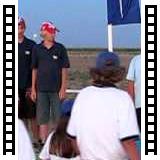 | US Junior S8D Team gets Gold Medals at 2010 WSMC (2011-06-03)      Craig Vinyard, Alyssa Stenberg, and Matthew Berk of the US Junior S8D Team make it to the top of the podium where they were later awarded Gold for the Junior S8D event. I was mostly shooting photos but switched briefly to video mode for this.
|
 | What if Slim Pickens flew on a Space Shuttle? (2011-06-03)      What if Slim Pickens flew on a Space Shuttle? Short onboard Space Shuttle SRB sep video which was silent, begging for some special audio to be added. The video was slowed down to allow for the audio.
|


















































































































































































